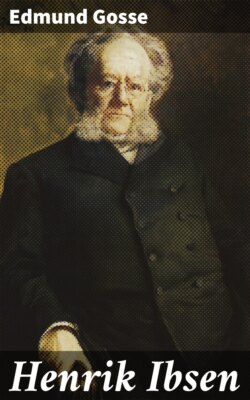Читать книгу Henrik Ibsen - Edmund Gosse - Страница 4
PREFACE
ОглавлениеNumerous and varied as have been the analyses of Ibsen's works published, in all languages, since the completion of his writings, there exists no biographical study which brings together, on a general plan, what has been recorded of his adventures as an author. Hitherto the only accepted Life of Ibsen has been Et literaert Livsbillede, published in 1888 by Henrik Jaeger; of this an English translation was issued in 1890. Henrik Jaeger (who must not be confounded with the novelist, Hans Henrik Jaeger) was a lecturer and dramatic critic, residing near Bergen, whose book would possess little value had he not succeeded in persuading Ibsen to give him a good deal of valuable information respecting his early life in that city. In its own day, principally on this account, Jaeger's volume was useful, supplying a large number of facts which were new to the public. But the advance of Ibsen's activity, and the increase of knowledge since his death, have so much extended and modified the poet's history that Et literaert Livsbillede has become obsolete.
The principal authorities of which I have made use in the following pages are the minute bibliographical Oplysninger of J. B. Halvorsen, marvels of ingenious labor, continued after Halvorsen's death by Sten Konow (1901); the Letters of Henrik Ibsen, published in two volumes, by H. Koht and J. Elias, in 1904, and now issued in an English translation (Hodder & Stoughton); the recollections and notes of various friends, published in the periodicals of Scandinavia and Germany after his death; T. Blanc's Et Bidrag til den Ibsenskte Digtnings Scenehistorie (1906); and, most of all, the invaluable Samliv med Ibsen (1906) of Johan Paulsen. This last-mentioned writer aspires, in measure, to be Ibsen's Boswell, and his book is a series of chapters reminiscent of the dramatist's talk and manners, chiefly during those central years of his life which he spent in Germany. It is a trivial, naive and rather thin production, but it has something of the true Boswellian touch, and builds up before us a lifelike portrait.
From the materials, too, collected for many years past by Mr. William Archer, I have received important help. Indeed, of Mr. Archer it is difficult for an English student of Ibsen to speak with moderation. It is true that thirty-six years ago some of Ibsen's early metrical writings fell into the hands of the writer of this little volume, and that I had the privilege, in consequence, of being the first person to introduce Ibsen's name to the British public. Nor will I pretend for a moment that it is not a gratification to me, after so many years and after such surprising developments, to know that this was the fact. But, save for this accident of time, it was Mr. Archer and no other who was really the introducer of Ibsen to English readers. For a quarter of a century he was the protagonist in the fight against misconstruction and stupidity; with wonderful courage, with not less wonderful good temper and persistency, he insisted on making the true Ibsen take the place of the false, and on securing for him the recognition due to his genius. Mr. William Archer has his reward; his own name is permanently attached to the intelligent appreciation of the Norwegian playwright in England and America.
In these pages, where the space at my disposal was so small, I have not been willing to waste it by repeating the plots of any of those plays of Ibsen which are open to the English reader. It would please me best if this book might be read in connection with the final edition of Ibsen's Complete Dramatic Works, now being prepared by Mr. Archer in eleven volumes (W. Heinemann, 1907). If we may judge of the whole work by those volumes of it which have already appeared, I have little hesitation in saying that no other foreign author of the second half of the nineteenth century has been so ably and exhaustively edited in English as Ibsen has been in this instance.
The reader who knows the Dano-Norwegian language may further be recommended to the study of Carl Naerup's Norsk Litteraturhistories siste Tidsrum (1905), a critical history of Norwegian literature since 1890, which is invaluable in giving a notion of the effect of modern ideas on the very numerous younger writers of Norway, scarcely one of whom has not been influenced in one direction or another by the tyranny of Ibsen's personal genius. What has been written about Ibsen in England and France has often missed something of its historical value by not taking into consideration that movement of intellectual life in Norway which has surrounded him and which he has stimulated. Perhaps I may be allowed to say of my little book that this side of the subject has been particularly borne in mind in the course of its composition.
E. G.
KLOBENSTEIN.
